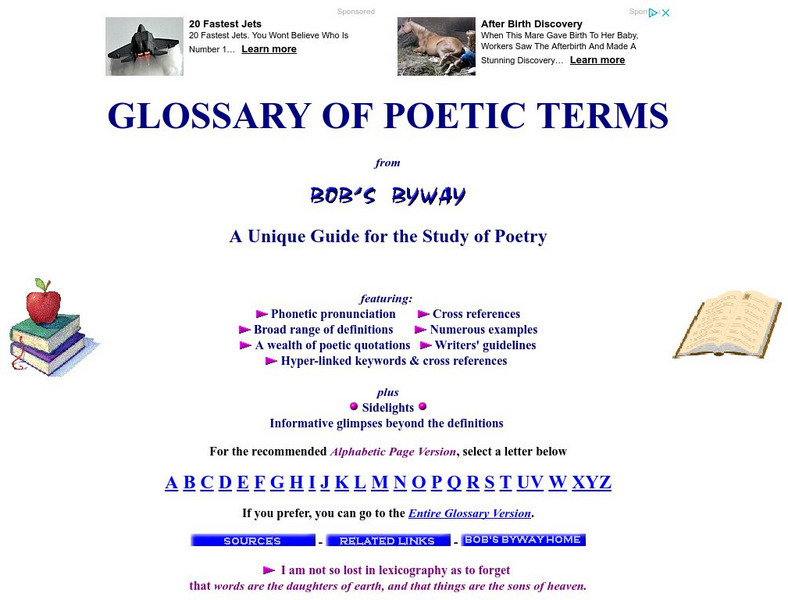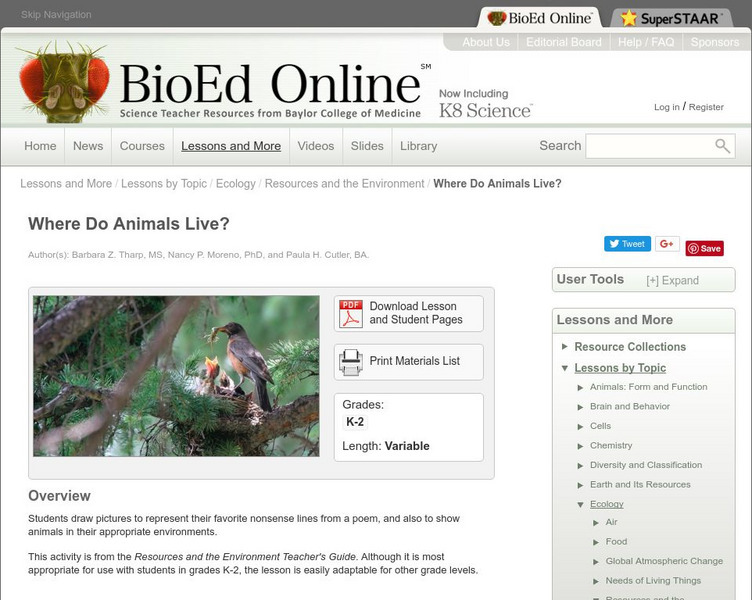PBS
Pbs Learning Media: How to Recognize a Phrase
A phrase is a group of related words that does not include both a subject and a verb. It only has one or the other! [0:39]
PBS
Pbs Learning Media: Learn About Dependent & Independent Clauses
A clause is a group of words that acts as a subject and a group of words that acts as a verb. A clause consists of a subject and a predicate, where the predicate is typically a verb phrase. [0:57]
PBS
Pbs Learning Media: What Verbals Are
Verbals are verbs disguised as nouns, adjectives, and adverbs. Verbals come in three forms: gerunds, infinitives, and participles. Gerunds are verbs that end in "-ing" and function as nouns. Participles end in "-ing," "-ed," "-d," "-t,"...
PBS
Pbs Learning Media: How to Avoid Dangling Modifiers
Modifiers are phrases, clauses, or even just words that add description. In clear sentences, modifiers are next to target words they are describing. Dangling modifiers are modifiers with no target to describe, which can confuse many...
PBS
Pbs Learning Media: How to Use Commas for Introductory Elements
Introductory elements are clauses, phrases, and words that appear before the main part of a sentence. Without commas, the reader may be confused. Use commas to indicate properly the who and the what. [0:40]
PBS
Pbs Learning Media: How to Use Conjunctions
Conjunctions are a part of a speech that connects different parts of a sentence, such as groups of words, clauses, or phrases. [0:41]
PBS
Pbs Learning Media: Watch Out for Ambiguous Antecedents
A pronoun's antecedent must be clear. There may be more than one word the pronoun could refer to, and in those cases it may be better not to use the pronoun. [0:40]
PBS
Pbs Learning Media: Make Sure Your Subjects and Verbs Agree
A verb is the action word of the sentence and it must agree with the subject, or main character, of the sentence. When the subject is singular, a verb needs an "s", but when the subject is plural, we can drop the "s". [0:41]
PBS
Pbs Learning Media: Irregular Plural Nouns
While plural nouns often indicate more than one of something with a simple "s" or "es," irregular plural nouns do not. They change the word entirely. Elf becomes elves, tooth becomes teeth! [0:45]
PBS
Pbs Learning Media: Relative Adverbs
A relative adverb is a word that talks about a place, time, or reason for something. Remember the three "w's": where, when, and why. [0:40]
PBS
Pbs Learning Media: What Are Collective Nouns?
A collective noun is a word that refers to a group, such as a collection, a herd, a team! [0:37]
PBS
Pbs Learning Media: Interjections Are Cool!
Hey! Listen to this. [0:48] Interjections are words that are typically exclaimed to convey the writer's sentiments or emotions on a matter. It may be followed by an exclamation point or a comma depending on the desired emotion.
PBS
Pbs Learning Media: How to Use Reference Materials
A dictionary is one of the most useful reference books anybody could ever use. Learn how to properly understand a dictionary's formatting and content! [0:46]
PBS
Pbs Teachers: Scientific American: Prime Time Primates: Chimps Count
Explore the techniques and steps in training an animal by attempting to train a classmate to perform a simple task without using known words. Train him or her to respond to a vocabulary of nonsense words with hidden meanings.
Other
Bob's Byway: Glossary of Poetic Terms
Calling itself "unique," Bob's is easy to use, with cross-links throughout, phonetic pronunciation guides when necessary, and many examples and quotations. Click on the letter and scroll for the word.
CommonLit
Common Lit: "Down the Rabbit Hole" by Lewis Carroll
CommonLit.org is a wonderful resource to use in a Language Arts classroom. Each story or article is accompanied by guided reading questions, assessment questions, and discussion questions. In addition, students can click on words to see...
BioEd Online
Bio Ed Online: Where Do Animals Live?
In this lesson plan students listen and participate by filling in missing words as the teacher reads a silly poem about places where animals might live. Students are required to draw pictures representing both their favorite nonsense...
PBS
Pbs Learning Media: How to Use the Correct Capitalization
Capitalizing is extremely important. Not only is it proper writing, but it also makes writing look polished and finished. Learn what should be capitalized and what shouldn't! [0:53]
University of Washington
University Washington: Memory and Learning for Kids
This University of Washington site includes interactive java-based games to test your memory. There are also lots of in-class activities for testing concentration and memory.
Other popular searches
- Nonsense Words List
- Context Clues Nonsense Words
- Phonics Nonsense Words
- Nonsense Words Kindergarten
- Nonsense Words Cards
- Cvc Nonsense Words
- Nonsense Words Worksheets
- Cbc Nonsense Words
- Dr Seuss Nonsense Words
- Nonsense Words Lessons
- Two Syllable Nonsense Words
- Dr. Seuss Nonsense Words






